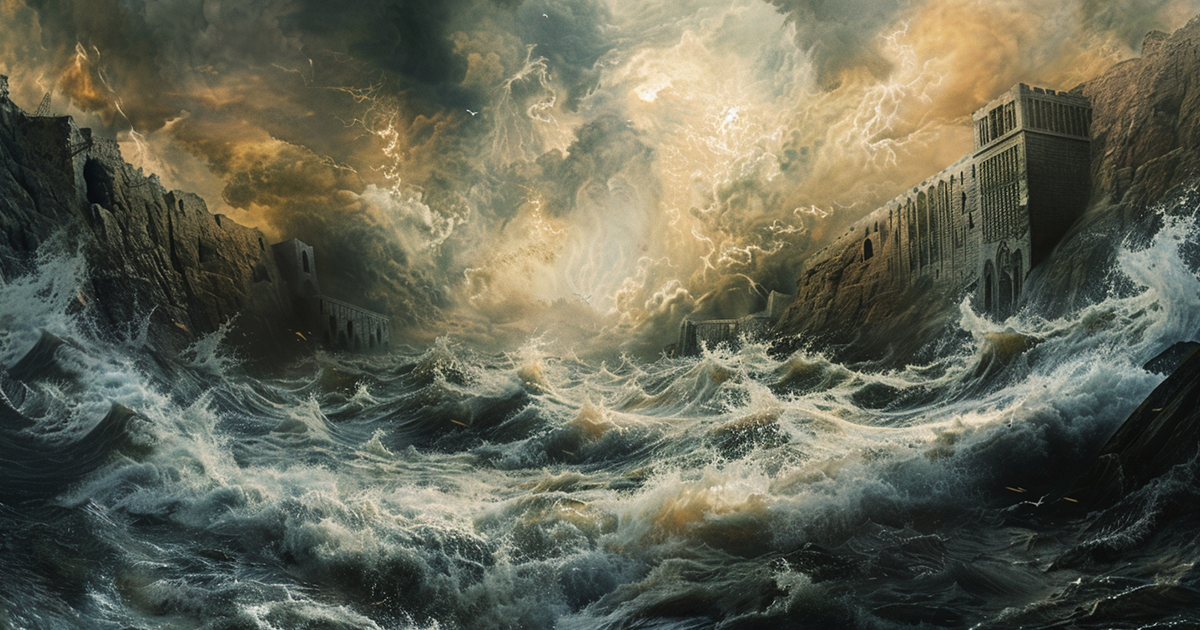Hidden within the annals of history are stories that defy the constraints of time, connecting civilizations and cultures. Among these tales lies a narrative veiled in the shadows of antiquity, a story that has resonated across the epochs, imprinting itself on the collective psyche of humanity. Today, we venture into the depths of an age-old epic, illuminating its origins and unraveling the ties that bind it to a well-known saga cherished by many.
Between the 10th and 6th centuries BC, the legend of Noah’s Ark emerged, finding its place in the Jewish Torah and the Old Testament. Yet, what often goes unnoticed is the remarkable resemblance this account bears to an even earlier story crafted by scholars of the ancient Sumerian civilization.
Within the Sumerian flood narrative, we encounter a hero entrusted with a monumental task—to construct an ark and safeguard Earth’s diverse species from an impending cataclysm unleashed by the divine. This saga traces back to the epics of Atrahasis and Gilgamesh, manuscripts that predate the biblical rendition by as much as a millennium.
The Sumerians, who thrived in what is now Iraq around 4,000 BC, left behind a legacy that traverses millennia. Theirs was a society steeped in culture, where clay tablets bore witness to the exploits of gods and mortals alike. Among these ancient writings lies the tale of the Deluge, etched in cuneiform script—an enduring testament to their civilization.

At the nucleus of the Sumerian pantheon resided a diverse panoply of deities, each holding sway over facets of the universe. Anu, the Supreme Sky God, ruled alongside Enlil, the Earth deity, and Enki, the master of the watery depths. It was these celestial beings who decreed humanity’s fate, unleashing the deluge to purge the Earth of its sins.
Amidst this cosmic tumult emerges our central figure—Zeus Sudra, Atrahasis, or Uta Napishtim, named variably across eras and regions. His narrative unfurls amidst the convulsions of divine schemes, as he heeds his patron deity’s warning and embarks on a quest to safeguard life amid the floodwaters.
The parallels between the Sumerian saga and its biblical counterpart are unmistakable. From the ark’s construction to the birds released in search of land, the echoes of ancient Mesopotamia resonate through the corridors of time. Yet, within these similarities lie nuanced distinctions, reflections of evolving cultures and theological interpretations.
As we tread the pathways of history, we encounter the merging of civilizations, where the Hebrew people, descendants of the Fertile Crescent, became enmeshed in Sumer’s heritage. It is within this crucible of cultural interchange that the tale of Noah’s Ark took shape, adapted to fit the tenets of an emerging faith.
In the tapestry of religious lore, stories are borrowed, reshaped, and re-envisioned, each rendition a mirror of the beliefs and aspirations of its followers. The Sumerian flood narrative stands as a tribute to the enduring potency of myth, a story interwoven into the tapestry of human consciousness.
By unraveling the intricate web of ancient legends, we glean insights into humanity’s shared legacy, where tales transcend boundaries and tongues, resonating with our collective origins and aspirations. As we gaze upon the waters of antiquity, may we discover comfort in knowing that, through the ages, we are interconnected by the strands of a shared story—one that continues to mold our perception of the world and our role within it.
